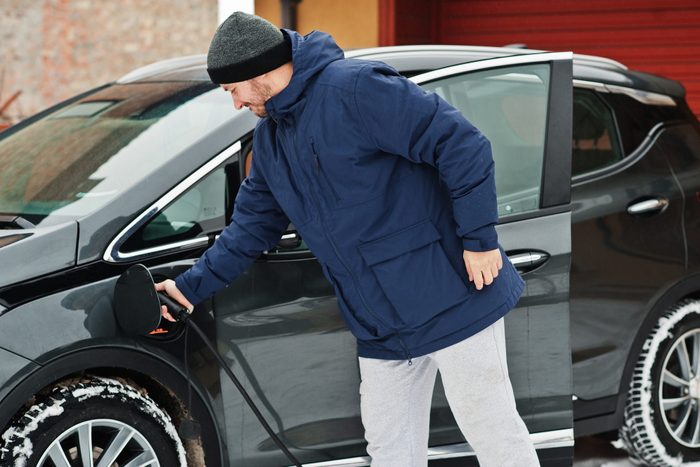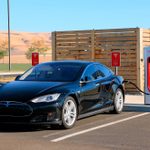5 Tips for Charging Your Electric Vehicle in Winter

Cold weather weakens an EV battery, increasing recharging times and lowering driving range. Here's what you need to know.
Our editors and experts handpick every product we feature. We may earn a commission from your purchases.
Cold temperatures are unfriendly to electric vehicles (EVs), and especially their lithium-ion batteries.
According to Anthony Lambkin, senior director of operations for Electrify America, when temperatures drop, the chemical and physical reactions in lithium-ion batteries slow down, just like a traditional lead-acid battery.
Charging your battery in a warmer location is ideal, but that’s not always possible. Charging rates also decrease as the battery reaches full capacity, making a colder battery more difficult to fully charge.
Here are some suggestions to get the most out of your EV and battery this winter.
On This Page
Expect Longer EV Battery Charging Times
In low temperatures, your EV’s battery charging system software reduces charging power, for a good reason — to avoid stressing the battery. The colder the temperature, the longer it takes the battery to charge.
A study by the Idaho National Laboratory found it took 36 percent less energy to charge an EV battery at 77 degrees than at 32 degrees.
Pay Attention to Temperatures
Check the forecast. According to the Norwegian Automobile Federation, during the winter months cold overnight temperatures can decrease an EV’s driving range by an average of 20 percent.
Some EV models can predict range reductions during extreme temperatures. Consumer Reports research show you should consider how many miles you drive in a typical day, then “double that number to determine the driving range that’s right for your needs.”
Unpredictability of weather is the main reason for adding range. If your EV sat in a cold parking lot all day, not knowing how long the drive home will take if you’re caught in a winter storm can be nerve-wracking.
Plan Your Charges
Relieve this worry by planning for stops at public charging stations before and during a trip.
To make travel plans more seamless, Electrify America and other companies offer mobile apps to help you quickly locate ultra-fast charging stations, which chargers are available, and charging costs. Consider carrying a mobile charger and the proper battery connection adapter so you can take advantage of any opportunity to “top off” your battery.
Park Indoors When You Can
Charging your EV at home is optimal because you can control the environment. A well-insulated garage will keep everything warmer, reduce the energy needed to charge your car and shorten recharging time. Besides being cost-effective, you’re not out in the freezing cold, either.
Consider adding a Level 2 EV charger to your garage. These operate on 240 volts but can fully recharge an EV in about three hours, seven to eight times quicker than a Level 1 charger.
Understand Your EV’s Cold Weather Features and Limitations
Running the heater, defroster or heated steering wheel will quickly drain the battery.
Your EV’s battery management system (BMS) monitors battery cells, charging and discharging rates, interior and exterior temperatures, and fault analysis in real time. It uses this data to autonomously control specific functions and operations, ultimately achieving optimum battery performance and operation.
An added BMS feature measures the estimated age of the battery to determine the mileage on each charge. Maintaining your EV will also help prolong battery life.
Some EVs have a pre-conditioning feature allowing drivers to program or manually warm up the battery to a more optimal temperature. While this uses some power, it can make the battery more efficient while maximizing driving range.



